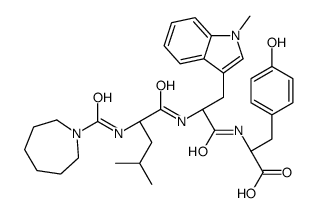Coronary and femoral arterial contraction with high glucose, insulin, and glucose-insulin-potassium solution: effects of hypoxia.
Pilar Nava, Roxana Carbó, Verónica Guarner
Index: Heart Vessels 16(2) , 57-63, (2002)
Full Text: HTML
Abstract
We studied whether the contractile responses to potassium chloride (KCI) of rat coronary and femoral arteries differ when perfused with solutions containing varying concentrations of metabolic substrates (glucose, oxygen, insulin) and whether these differences might explain some of the beneficial effects of glucose-insulin-potassium (GIK or polarizing) solution. We also studied the mediation of the endothelium on these effects. Contraction of femoral arteries decreased with low and high glucose while in coronary arteries it increased as the glucose concentrations rose. Endothelin receptor antagonists blocked this increase. The tension increase induced by insulin in both vessels was smaller in the coronary arteries. The ETA receptor antagonist PD51242 blocked most of the insulin effect in the coronary arteries, whereas in the femoral arteries this was blocked by the ET(B) receptor antagonist BQ788. Hypoxia blocked the constrictive responses to glucose and insulin of the coronary but not of the femoral arteries. GIK increased contractile force in hypoxic femoral arteries but reduced that in coronary arteries. The contractile response decreased by GIK in hypoxic coronary arteries was restored by N(G)-nitro-L-arginine methyl ester, suggesting mediation by nitric oxide. We conclude that in the presence of high glucose and/or insulin levels, coronary arteries respond to KCl differently from femoral arteries, their behavior during hypoxia might explain some of the beneficial effects of GIK.
Related Compounds
| Structure | Name/CAS No. | Molecular Formula | Articles |
|---|---|---|---|
 |
PD 151,242
CAS:155561-67-4 |
C34H45N5O6 |
|
A simple one-pot multicomponent synthesis of an octahedral n...
2007-01-01 [Nat. Protoc. 2 , 1288-96, (2007)] |
|
Endothelin-1[1-31], acting as an ETA-receptor selective agon...
2000-12-29 [FEBS Lett. 487(2) , 194-8, (2000)] |
|
Comparison of endothelin-A and endothelin-B receptor distrib...
2004-11-01 [J. Cardiovasc. Pharmacol. 44 Suppl 1 , S224-6, (2004)] |
|
Transient hypoxia/hypoglycemia upregulates endothelin B rece...
2000-07-01 [Glia 31(1) , 91-4, (2000)] |
|
Endothelin-1 binding to endothelin receptors in the rat ante...
2002-04-01 [Cell. Mol. Neurobiol. 22(2) , 207-26, (2002)] |